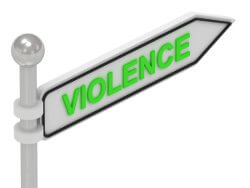Violence in Schools
The Connection between
Psychiatric Drugs and Violence
This article is a little harder to swallow than others, but the truth is sometimes hard to swallow. We must know the facts to protect our students.
In 1999, a tragedy occurred at Columbine High School in Colorado, U.S.A. Eric Harris and Dylan Klebold walked into their high school and began shooting at students and teachers. They killed 13 people and wounded 23 others before committing suicide.
Click Here for Step-by-Step Rules, Stories and Exercises to Practice All English Tenses
Investigators later discovered that Eric Harris was taking Luvox, a psychiatric drug prescribed for depression.
In addition, Eric Harris and Dylan Klebold had both attended "anger management" and "death education" classes as part of a court-ordered counseling program.
After Columbine, people truly began studying the connection between violent behaviors and psychotropic drugs. Although some studies had been conducted in the past, the Columbine incident gave this issue new life.
The Citizens Commission on Human Rights International reports "at least 31 school shootings and/or school-related acts of violence have been committed by those taking or withdrawing from psychiatric drugs…"
Here are just a few more examples of students who committed acts of school violence while taking psychiatric drugs or during withdrawal of psychiatric drugs:
- In 1998, 15-year-old Kip Kinkel killed his parents and then
opened
fire at school. Two students were killed and 25 were wounded. Kip was taking Prozac for
depression. He was also in anger management classes.
- In 2001, 18-year-old Jason Hoffman took a gun to school and
wounded five people. He
was taking Celexa and Effexor.
- In 2005, Jeff Weise shot his grandparents and then went to
school and killed 8 students and 1 teacher. He then committed suicide.
Jeff Weise, who was
16, was taking Prozac.
- In 2006, Willam Barrett Foster, 17, was withdrawing from his psychiatric
medications. He fired shots and held a student and teacher
hostage at a school.
- In 2010, Hammad Memon shot a fellow middle school student.
Hammad was taking
Zoloft for depression.
- In 2011, Christian Helms took pipe bombs to school. He shot and wounded the school police officer. Christian, who was 14 years old, was taking prescription drugs for ADHD and depression.
Another Mass Shooting, Another Psychiatric Drug?
School Shooters Under the Influence of Psychiatric Drugs
These senseless acts of violence are not just limited to teens and schools. Citizens Commission on Human Rights International reports 12 additional recent acts of violence committed by people taking or withdrawing from psychiatric drugs.
Other Murders/Murder-Suicides Committed by Individuals on Psychiatric Drugs
What is the connection between psychiatric drugs and violence?
There is no simple explanation for why people commit these senseless acts of violence. However, there is a disturbing connection between psychiatric drugs and acts of violence, including school violence.Psychiatric drugs have many disturbing side effects, including:
- anger
- violent behavior
- psychosis
- mood swings

- suicidal thoughts/actions
- hallucinations
- aggression
- depression
- mental changes
- anxiety
- abnormal thinking
- extreme irritability
- agitation
- confusion
- addiction
Withdrawal side effects can be just as bad or worse than side effects while taking the drug.
For example, studies have shown that 50 to 80 percent of people taking Paxil have trouble stopping the drug. After becoming addicted, they experience severe withdrawal side effects like those listed above. (Paxil is a psychiatric drug used to "treat" depression and anxiety.)
These side effects can cause people to think and do things they would not normally do, including committing acts of extreme violence.
Anger management, death education, and conflict resolution classes
Scientists have also found a connection between school violence and anger management, death education or conflict resolution classes.Death education refers to classes that focus on death and the human responses to death. It tries to teach students to cope with death and how to deal with their grief. During the time of the Columbine massacre, students attended death education classes as part of the Colorado school curriculum.
Eric and Dylan, the shooters at Columbine High School, had both attended anger management and death education classes.
There is no evidence that anger management classes or conflict resolution classes help students control their anger.
Many people believe that these classes are just another way to cover up the real issues that lead to violent outbursts.
For more information:
Follow these links for more information about the link between school violence and psychiatric drugs:- Psychiatric
Drugs: Create Violence and Suicide
- Psychiatric
Drugs and Anger Management Curricula
- Another
Mass Shooting, Another Psychiatric Drug?
- School Shooters Under the Influence of Psychiatric Drugs
The Call for Federal Investigation of Psychiatric Drugs, School Shootings & Senseless Violence
Get Updates, Special Offers, and English Resources
Download your FREE GIFT (the first two chapters of
English Short Stories Book and Workbook)
as soon as you join!

By submitting your email, you consent to receiving updates and newsletters from us and to the sharing of your personal data with third parties for the purposes of sending you communications. We will not spam you. You can unsubscribe at any time. For more information, please see our privacy policy.








